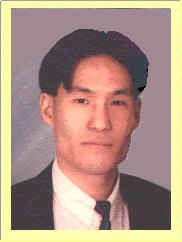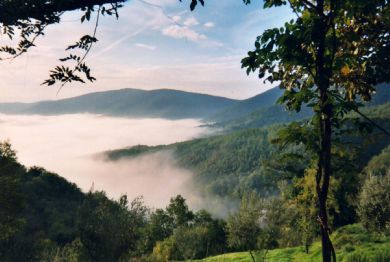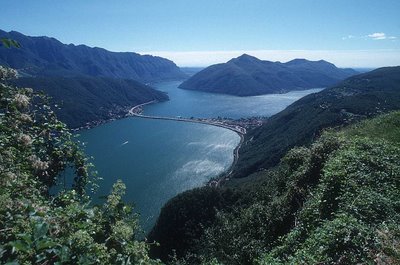 (Photo by Tom Dempsey)
(Photo by Tom Dempsey)
A little bit of everything and a lot of nothing: images and stories to take us on an eclectic journey. . . . . . CLICK ON THE HEADING FOR THE "SOURCE" OF THE ARTICLE AND CLICK ON THE LINK BELOW FOR PHOTOGRAPHER. CLICK ON IMAGES FOR A LARGER VERSION.
Thursday, November 30, 2006
Antikythera: World's First Computer Built by the Ancient Greeks
 A computer in antiquity would seem to be an anachronism, like Athena ordering takeout on her cellphone.
A computer in antiquity would seem to be an anachronism, like Athena ordering takeout on her cellphone.But a century ago, pieces of a strange mechanism with bronze gears and dials (above left) were recovered from an ancient shipwreck off the coast of Greece. Historians of science concluded that this was an instrument from the second century B.C. that calculated and illustrated astronomical information, particularly phases of the moon and planetary motions.
The Antikythera Mechanism, sometimes called the world's first computer, has now been examined with the latest in high-resolution imaging systems and three-dimensional X-ray tomography. A team of British, Greek and American researchers was able to decipher many inscriptions and reconstruct the gear functions (above right), revealing, they said, "an unexpected degree of technical sophistication for the period."
The researchers, led by Tony Freeth and Mike Edmunds, both of the University of Cardiff in Wales, reported the results of their study Thursday in the journal Nature.
They said their findings showed that the inscriptions related to lunar-solar motions and that the gears were a mechanical representation of the irregularities of the moon's orbital course across the sky, as theorized by the astronomer Hipparchos. They established the date of the mechanism at 150 to 100 B.C.
The Roman ship carrying the artifacts sank off the island of Antikythera around 65 B.C. Some evidence suggests that the ship had sailed from Rhodes. The researchers speculated that Hipparchos, who lived on Rhodes, might have had a hand in designing the device.
Historians of technology think the instrument is more complex than any known device for at least a millennium afterward. Earlier examinations of the instrument, mainly in the 1970s by Derek de Solla Price, a Yale historian who died in 1983, led to similar interpretations, but they were generally disputed or ignored.
The hand-operated mechanism, presumably used in preparing calendars for seasons of planting and harvesting and fixing religious festivals, had at least 30, possibly 37, hand-cut bronze gear-wheels, the researchers reported. An ingenious pin-and-slot device connecting two gear-wheels induced variations in the representation of lunar motions according to the Hipparchos model of the moon's elliptical orbit around Earth.
The functions of the mechanism were determined by the numbers of teeth in the gears. The 53-tooth count of certain gears, the researchers said, was "powerful confirmation of our proposed model of Hipparchos's lunar theory."
The detailed imaging revealed more than twice as many inscriptions as had been recognized from earlier examinations. Some of these appeared to relate to planetary as well as lunar motions. Perhaps, the researchers said, the mechanism also had gearings to predict the positions of known planets.
Charette noted that more than 1,000 years elapsed before instruments of such complexity are known to have re- emerged. A few artifacts and some Arabic texts suggest that simpler geared calendrical devices had existed, particularly in Baghdad, around A.D. 900.
It seems clear, Charette said, that "much of the mind-boggling technological sophistication available in some parts of the Hellenistic and Greco-Roman world was simply not transmitted further," adding, "The gear-wheel, in this case, had to be reinvented."
(Excerpts from an article by John Noble Wilford / The New York Times
Published: November 30, 2006
DISAPPEARING ACT: The Bench Toilet
 The toilet has certainly graduated from unsightly fixture to beautiful swan, but some interesting emerging design concepts include beautiful ways to enclose or enhance its look, as with Troy Adam’s bench toilet design for Julien, a toilet that incorporates a sliding wood panel that converts the fixture into a bench. Prices start at $11,450.
The toilet has certainly graduated from unsightly fixture to beautiful swan, but some interesting emerging design concepts include beautiful ways to enclose or enhance its look, as with Troy Adam’s bench toilet design for Julien, a toilet that incorporates a sliding wood panel that converts the fixture into a bench. Prices start at $11,450.
UNDERCOVER: Microwave in a Drawer
 Dacor's pullout microwave features:
Dacor's pullout microwave features:Unique Drawer Configuration
Automatic Drawer Opening
Control Lock
Three Sensor Cooking Programs
Reheat Mode
Micro Warm Mode
Defrost Mode
Easy Minute Function
11 Power Levels
950 Watts
Touch Controls
Timer / Clock
Interior Capacity: Cubic Feet: 1.0
Overall Dimensions: 30" W x 15 5/8" H x 24 5/8" D
And sells for $1,049.00
Wednesday, November 29, 2006
Time Magazine Named the Tesla Roadster One of the Best Inventions of 2006
 ALL right, no beating around the high-voltage bush: What is the Tesla Roadster, the dead-sexy, six-figure, all-electric sports car prototype like to drive?
ALL right, no beating around the high-voltage bush: What is the Tesla Roadster, the dead-sexy, six-figure, all-electric sports car prototype like to drive?It's hard to be definitive, since the company could only allow me a 45-minute romp around Marina del Rey earlier this week and also because the prototype I drove has been loved half to death since the car was unveiled at the Santa Monica Airport in July.
The Tesla all electric sports car goes for a paltry (to some) $89,000 - $100,000.
(An earlier posting on the Tesla appeared on July 26, 2006)
There's Something About Cheeses That Moves My Spirit
 Gorgeous American cheeses — from top, Vella Dry Jack, Rogue Creamery Smokey Blue, Sonoma Cheese’s Sonoma Jack and Cypress Grove’s Humboldt Fog chèvre — can transform classic pasta dishes such as pasta ai quattro formaggi. When playing matchmaker, insist on top-quality pastas too.
Gorgeous American cheeses — from top, Vella Dry Jack, Rogue Creamery Smokey Blue, Sonoma Cheese’s Sonoma Jack and Cypress Grove’s Humboldt Fog chèvre — can transform classic pasta dishes such as pasta ai quattro formaggi. When playing matchmaker, insist on top-quality pastas too.(Photo by Don Bartletti)
A Picture's Worth a Thousand Words But This One Helped Save Lives in Auschwitz
 Here's one of the nine portraits Dina Gottliebova Babbitt was ordered to paint in Auschwitz in 1944. The work saved the young Jewish woman and her mother by providing them extra food — and time. She was forced to do the paintings in 1944 as part of Josef Mengele's murderous theorizing about racial differences. Mengele had plucked Babbitt, a Czech Jew, from a group headed to the gas chambers and ordered the artist to produce portraits of doomed Gypsies that would capture skin tone better than his photographs did. "I painted what I saw, very definitely," recalls Babbitt, now 83 and a retired Hollywood animator. "And what I saw was despair and sadness."
Here's one of the nine portraits Dina Gottliebova Babbitt was ordered to paint in Auschwitz in 1944. The work saved the young Jewish woman and her mother by providing them extra food — and time. She was forced to do the paintings in 1944 as part of Josef Mengele's murderous theorizing about racial differences. Mengele had plucked Babbitt, a Czech Jew, from a group headed to the gas chambers and ordered the artist to produce portraits of doomed Gypsies that would capture skin tone better than his photographs did. "I painted what I saw, very definitely," recalls Babbitt, now 83 and a retired Hollywood animator. "And what I saw was despair and sadness."In 1973, Babbitt was stunned to learn that seven of those nine watercolors had survived and were in the museum at the former concentration camp in Poland. Since then, she has been trying to retrieve them — a quest that raises painful questions about ownership of the products of slave labor as well as the artworks' role in documenting Holocaust history.
(Excerpts from an article by Larry Gordon)
"New Invention Allows Humans to Live Forever"
 According to Alex Chiu (shown in the photo), based on testimonies, facts, and proofs, people are believed to be able to stay physically young forever by using his new inventions "The Eternal Life Rings" and "The Eternal Life Foot Braces". The Eternal Life Rings are to be worn on both small fingers of a user during sleep. The Eternal Life Foot Braces are to be worn on all toes of both feet during sleep. Both devices consist of rare earth or ceramic magnets and plastic braces which hold magnets onto the fingers of the user. The inventor explained that the fingers and toes are the negative (-) and positive (+) terminals of your body.
According to Alex Chiu (shown in the photo), based on testimonies, facts, and proofs, people are believed to be able to stay physically young forever by using his new inventions "The Eternal Life Rings" and "The Eternal Life Foot Braces". The Eternal Life Rings are to be worn on both small fingers of a user during sleep. The Eternal Life Foot Braces are to be worn on all toes of both feet during sleep. Both devices consist of rare earth or ceramic magnets and plastic braces which hold magnets onto the fingers of the user. The inventor explained that the fingers and toes are the negative (-) and positive (+) terminals of your body. When placing the magnetic devices, the magnetic pole on the right side of the human body is opposite to the left side. With a opposite pole on each side of the human body, blood circulation and electric current of the body are enhanced. The enhanced blood circulation and electric current increase metabolism in order to fight the aging process.
 The Eternal Life Rings and The Eternal Life Foot Braces (shown above) invented by Alex Chiu are believed to allow humans to stay physically young forever or turn humans physically younger, (Our lawyer told us to use the word "believe") and cure various diseases and handicaps as long as you wear the rings or foot braces every night during sleep.
The Eternal Life Rings and The Eternal Life Foot Braces (shown above) invented by Alex Chiu are believed to allow humans to stay physically young forever or turn humans physically younger, (Our lawyer told us to use the word "believe") and cure various diseases and handicaps as long as you wear the rings or foot braces every night during sleep.OK, Don't believe me, but here's his website:
(http://www.alexchiu.com/eternallife/index.html)
Tuesday, November 28, 2006
"Ohhhh Noooo !!"
Monday, November 27, 2006
Ancient Fortress May Be Toppled
 JAISALMER, INDIA — For centuries, the colossal sandstone fort that looms over this dusty town has withstood the harshly arid climate of the Rajasthani desert. Inside the citadel's honey-colored walls, tenacious warrior families survived sieges and endured droughts by hoarding every drop of water.
JAISALMER, INDIA — For centuries, the colossal sandstone fort that looms over this dusty town has withstood the harshly arid climate of the Rajasthani desert. Inside the citadel's honey-colored walls, tenacious warrior families survived sieges and endured droughts by hoarding every drop of water.These days, though, the problem with water isn't one of scarcity. Instead, Jaisalmer is struggling with a surfeit of the stuff, an overabundance that is ravaging the historic stronghold in a way eight centuries and countless invading armies failed to do.
Residents and visitors to the fairy-tale fort now enjoy instant access to piped-in water. What was once a precious resource flows freely from the tap, gurgles down toilets and fills the washing machines of hundreds of residents and countless hotels. During the busy tourist season, which has just begun, consumption per person is more than 10 times what it was two decades ago.
But what gets channeled in doesn't always find a way out. Thanks to woefully inadequate drainage and sewage systems, runoff has seeped into the foundations and walls of the fort, literally weakening its defenses.
Preservationists liken the fort's predicament to a sandcastle being doused with a bucket of water. To the naked eye, the citadel and its rocky perch appear impregnable, but water easily erodes the sandstone and the soft bentonite clay that underlies much of Jaisalmer.
Just What We Need . . . Another Kooky Ideologue

President Bush made some winningly conciliatory remarks the day after his party's Nov. 7 electoral drubbing, saying he looked forward to governing in a more bipartisan fashion. Then he turned around and started naming kooky ideologues to key posts.
The latest recess appointment, Eric Keroack as head of the federal government's family planning office, is an extremist so out of line with scientific thought that it is difficult to describe his views without laughing.
As medical director of A Woman's Concern, a small chain of nonprofit pregnancy counseling clinics that offer no information on birth control, Keroack has agitated against abortion and even contraception — including for married women. The organization continues to push the discredited nonsense that abortion increases a woman's chances of breast cancer and is more dangerous during the first eight weeks of pregnancy (when, in fact, the risk of complication is actually at its lowest). Birth control, according to A Woman's Concern's tortured logic, is somehow "demeaning to women." And Keroack has argued that women who have sex with multiple partners alter their brain chemistry in the process, making it harder for them to form close relationships.
This is the man who will oversee $283 million in annual Department of Health and Human Services grants for providing access to family planning education and contraceptives "to all who want and need them."
The administration is still wasting $158 million a year on abstinence-only education programs that the Government Accountability Office concluded this month have not been shown to work and at times put forth misleading information about condoms and AIDS.
Keroack does not need Senate confirmation, so there is little Congress can do about a president who continues to select anti-scientific ideology over basic competence, aside from making it clear that funding for these programs depends on HHS using the money as intended.
But the real check on Bush's silliness comes from voters. On Nov. 7, efforts to limit women's reproductive rights were routed not only in California and Oregon but in South Dakota and Kansas. Appeasing social conservatives is not just bad policy, it's becoming losing politics as well.
Sunday, November 26, 2006
A Visit to Orcas Island is Something You'll Never Forget
 Orcas Island circa 1868
Orcas Island circa 1868Orcas Island is the largest of the San Juan Islands, which are located off the northern coast of Washington State. Approximately an hour and twenty minutes from the mainland city of Anacortes by ferry, Orcas is home to an eclectic community of artisans and small cottage businesses. Its diverse landscape of mountains, wooded countryside and spectacular vistas make it a popular destination for both day trips and extended vacations.
 Rosario Resort, the island’s largest hotel, is the former estate of shipbuilder Robert Moran and offers first-class dining and accommodations, as well as sweeping views of sound. There also are a number of bed and breakfast inns located throughout the island.
Rosario Resort, the island’s largest hotel, is the former estate of shipbuilder Robert Moran and offers first-class dining and accommodations, as well as sweeping views of sound. There also are a number of bed and breakfast inns located throughout the island. Moran State Park is located near Eastsound and is a favorite camping location. Mount Constitution, which towers 2,409 feet, affords a spectacular 360-degree view of the surrounding parklands and islands. At sunset, you can stand on top of the observation tower and slowly spin around enjoying the magical iridescence of the sea that surrounds you. I promise you, you'll never forget it.
Moran State Park is located near Eastsound and is a favorite camping location. Mount Constitution, which towers 2,409 feet, affords a spectacular 360-degree view of the surrounding parklands and islands. At sunset, you can stand on top of the observation tower and slowly spin around enjoying the magical iridescence of the sea that surrounds you. I promise you, you'll never forget it. Orcas Island can be reached from the mainland via a leisurely ferry ride from Anacortes or by seaplane from Seattle or Portland, Oregon. Visitors should plan visits ahead of time and check ferry and plane schedules. Not all of the ferries stop at Orcas Island and travel times vary according to the time of day. Orcas Island also makes an ideal lunch or dinner stop from any of the adjacent San Juan Islands. In the photo above, Mt. Baker can be seen in the background.
Orcas Island can be reached from the mainland via a leisurely ferry ride from Anacortes or by seaplane from Seattle or Portland, Oregon. Visitors should plan visits ahead of time and check ferry and plane schedules. Not all of the ferries stop at Orcas Island and travel times vary according to the time of day. Orcas Island also makes an ideal lunch or dinner stop from any of the adjacent San Juan Islands. In the photo above, Mt. Baker can be seen in the background.
Million-Dollar Bugatti Is Coming to U.S.
 The $1 million dollar Bugatti Veyron, now the world's fastest factory-produced automobile, is about to arrive on American shores. It features a massive, rear-mounted 16-cylinder engine with 1,001 horsepower, needs just 2.5 seconds to accelerate from zero to 62 miles per hour, and burns rubber so quickly that its makers had to hire France's Michelin SCA to develop a special compound for its tires. Its top speed: 252.9 mph. 6 U.S. Bentley dealerships will sell this fortune of a car.
The $1 million dollar Bugatti Veyron, now the world's fastest factory-produced automobile, is about to arrive on American shores. It features a massive, rear-mounted 16-cylinder engine with 1,001 horsepower, needs just 2.5 seconds to accelerate from zero to 62 miles per hour, and burns rubber so quickly that its makers had to hire France's Michelin SCA to develop a special compound for its tires. Its top speed: 252.9 mph. 6 U.S. Bentley dealerships will sell this fortune of a car.
M I T PLANS "STACKABLE CARS" FOR THE FUTURE
 "Imagine a shopping cart - a vehicle that can stack - you can take the first vehicle out of a stack and off you go," says Mr Chin an architect and engineer at MIT's media lab and a member of Prof Mitchell's research group. "These stacks would be placed throughout the city. A good place would be outside a subway station or a bus line or an airport, places where there's a convergence of transportation lines and people." MIT has been working on these 'Stackable' Cars for the for the past 4 years. They will generate zero pollution and will be customizable. A final design will be presented to General Motors in a few months, which will build a prototype. Something to look for in the near future.
"Imagine a shopping cart - a vehicle that can stack - you can take the first vehicle out of a stack and off you go," says Mr Chin an architect and engineer at MIT's media lab and a member of Prof Mitchell's research group. "These stacks would be placed throughout the city. A good place would be outside a subway station or a bus line or an airport, places where there's a convergence of transportation lines and people." MIT has been working on these 'Stackable' Cars for the for the past 4 years. They will generate zero pollution and will be customizable. A final design will be presented to General Motors in a few months, which will build a prototype. Something to look for in the near future.
Sleek Looks and a Lot More to be said for the New Mazda CX-7
 The Mazda CX-7 crossover SUV will be priced below $50,000 and use a 2.3-litre direct injection (DISI) turbocharged engine providing plenty of power and torque. Expect good good fuel economy, a torque peaks of substantial 350Nm at just 2500rpm, 18 inch wheels, and dual front, front side and head protecting curtain airbags standard.
The Mazda CX-7 crossover SUV will be priced below $50,000 and use a 2.3-litre direct injection (DISI) turbocharged engine providing plenty of power and torque. Expect good good fuel economy, a torque peaks of substantial 350Nm at just 2500rpm, 18 inch wheels, and dual front, front side and head protecting curtain airbags standard.
Where the ice maker's always full
 Before embarking on a dog-sled excursion north of the Arctic Circle, Linda Gase couldn't really warm up in her hotel room — or it might have melted. The TV writer-producer stayed at the Icehotel in Jukkasjärvi, Sweden, a structure built each year out of blocks of ice cut from the Torne River. This image, taken with a Canon Powershot SD400, shows one of the 23 artist-designed suites. "We were there in April, and at that time of year they're approaching 24-hour daylight," said Gase, who lives in Santa Monica, California. "The ice would change colors depending on the time of day." Gase barely missed the spring thaw. The Icehotel closed three days after she checked out.
Before embarking on a dog-sled excursion north of the Arctic Circle, Linda Gase couldn't really warm up in her hotel room — or it might have melted. The TV writer-producer stayed at the Icehotel in Jukkasjärvi, Sweden, a structure built each year out of blocks of ice cut from the Torne River. This image, taken with a Canon Powershot SD400, shows one of the 23 artist-designed suites. "We were there in April, and at that time of year they're approaching 24-hour daylight," said Gase, who lives in Santa Monica, California. "The ice would change colors depending on the time of day." Gase barely missed the spring thaw. The Icehotel closed three days after she checked out.
HOLMENKOLLEN SUNSET
Saturday, November 25, 2006
The History of the Sea Kayak and the Sport
 The exact origin of the kayak is unknown, but we do know that the first people to navigate with kayaks were the Eskimos. It is believed to be the oldest type of boat that is still employed today, estimating over 3,000 years old.
The exact origin of the kayak is unknown, but we do know that the first people to navigate with kayaks were the Eskimos. It is believed to be the oldest type of boat that is still employed today, estimating over 3,000 years old.Kayaks were utilized by the Aleuts (inhabitants of the Aleutian archipelago near Alaska), the Inuits of Northern Canada, the Norse of Greenland and Iceland, Lapons in Northern Europe, and the Koryak and Chukchi tribes in Siberia.
According to some historians, the word kayak means “clothing for going in the water” since it was built to the exact measurements of the paddler. Other historians say it means “man-small boat”. Nowadays, many paddlers maintain that you “put on” a kayak, not get in one.
In the Eskimo society, children could not navigate these boats until they became older and reached their maximum growth. Then, almost like a ritual, the family constructed a kayak especially for the child. It was said that if an Eskimo went out to hunt and did not return, he had borrowed the boat.
Sailor Rescues Capsized Opponent in Solo Around-the-World Race
 British sailor Alex Thomson was rescued from his capsized yacht on the icy Southern Ocean by another competitor in a solo around-the-world race, who turned back in heavy waves and wind. Mike Golding picked up Thomson about 1,000 miles southeast of the Cape of Good Hope.
British sailor Alex Thomson was rescued from his capsized yacht on the icy Southern Ocean by another competitor in a solo around-the-world race, who turned back in heavy waves and wind. Mike Golding picked up Thomson about 1,000 miles southeast of the Cape of Good Hope. Race organizers said it took four tries and nearly two hours for Thomson to make it to Golding's boat in a life raft because of waves and 25-mph winds.
"This has been without doubt the most terrifying and emotional experience of my life," Thomson said.
(The above image is from a similar rescue that occurred earlier in the year.)
Friday, November 24, 2006
"Some men and women see things as they are and say why; I dream things that never were and say why not?" - George Bernard Shaw
 These inspiring words had an enormous impact on Robert F. Kennedy and thus on us all. The film "Bobby" now showing in theatres everywhere follows the lives of a handful of people who have nothing in common, except that they're staying in or working at the Ambassador Hotel in Los Angeles on the day of Robert F. Kennedy's assassination in 1968. Why such a structurally scattered movie should hang together at all is a mystery. That it does more than that, that it works brilliantly, is a miracle, or at the very least the product of unquantifiable causes: a pervasive mood, a unified intensity of feeling, a filmmaker's unspoken but undeniable understanding of the meaning of every moment.
These inspiring words had an enormous impact on Robert F. Kennedy and thus on us all. The film "Bobby" now showing in theatres everywhere follows the lives of a handful of people who have nothing in common, except that they're staying in or working at the Ambassador Hotel in Los Angeles on the day of Robert F. Kennedy's assassination in 1968. Why such a structurally scattered movie should hang together at all is a mystery. That it does more than that, that it works brilliantly, is a miracle, or at the very least the product of unquantifiable causes: a pervasive mood, a unified intensity of feeling, a filmmaker's unspoken but undeniable understanding of the meaning of every moment. Emilio Estevez wrote and directed the film, which is astonishing in itself. Talk about second acts in American life. With one film, Estevez has transformed himself from a middle-aged joke into a youthful auteur who has made something beautiful, something he can be proud of, one of the best films of 2006. Perhaps strong emotion guided him. Otherwise, it's difficult to imagine how he could have known that a narrative so diffuse could come together into a powerful whole.
(Excerpts from a review by Mick LaSalle)
AMERICAN COWBOY TOM MIX
 When you think of the American cowboy, a certain image springs to mind. You picture a stalwart, clean living hero astride a noble horse who is always ready to right wrongs and champion the cause of justice. Such westerners may have populated the real West but most likely the abovementioned description owes its existence to... TOM MIX. Tom Mix was the first of the colorful, escapist motion picture cowboys.
When you think of the American cowboy, a certain image springs to mind. You picture a stalwart, clean living hero astride a noble horse who is always ready to right wrongs and champion the cause of justice. Such westerners may have populated the real West but most likely the abovementioned description owes its existence to... TOM MIX. Tom Mix was the first of the colorful, escapist motion picture cowboys. He was also the most successful. It is hard to measure that success by today's standards. At the peak of his motion picture career he was paid in excess of $17,000.00 per week, a sum greater than any other salary earned by a Western star. Consider that at this point in history, circa 1920, the average hourly wage was 30 or 40 cents. Movie theater tickets were a nickel or a dime. This was before income tax. Tom Mix made millions for every studio that contracted him. He was one of the most popular men in the country loved by children and adults alike. His juvenile fan club boasted two million members.
His film career spanned 25 years from 1910 to 1935. During that time he starred in between 300 and 400 films. An exact number is not known as few of his films exist today. Many of them have deteriorated and others were disposed of by the studios. Regardless of the precise count, Tom Mix's film output was phenomenal.
The Risks of a Stuntman
"Holding up a Mirror to Peru"
 Machu Picchu was on Jeremy Arkes’ must-see-before-I-die list, so earlier this summer he and six friends traveled to Peru for two weeks. They were on a train from Cusco to Lake Titicaca when he leaned out from the rear car’s balcony with his Nikon N80 to snap this photo. “I just wanted to get a picture of the train and some mountains,” said Arkes, an economist who lives in Santa Monica. “I had no idea I’d get that great reflection.”
Machu Picchu was on Jeremy Arkes’ must-see-before-I-die list, so earlier this summer he and six friends traveled to Peru for two weeks. They were on a train from Cusco to Lake Titicaca when he leaned out from the rear car’s balcony with his Nikon N80 to snap this photo. “I just wanted to get a picture of the train and some mountains,” said Arkes, an economist who lives in Santa Monica. “I had no idea I’d get that great reflection.”Why the Los Angeles Times chose to feature this photo:
"This photo exploded out of the screen: the arid landscape and yellow grass, the intense blue of the sky, the purple mountain that looks seems to slip from the sky into into the train car windows. The reflection temporarily makes you think that the window is transparent, and that element of surprise draws you in." (By Robin Rauzi, Assistant Travel Editor)
Thursday, November 23, 2006
"Standing Room Only"
 From the Fall of 1997 to March 2001 "Standing Room Only" was part of the campus landscape of Western Michigan University and a prominent and inviting image from Waldo Library. Artist Patrick Dougherty describes his artistic vision: "I believe one's childhood shapes his or her choice of materials. Mine came from the underbrush of my North Carolina home, a place where tree limbs intersected and I could imagine in the mass of winter twigs all kinds of shapes and speeding lines. When I turned to sculpture in the mid 1980s, the plentiful saplings along my driveway became the raw material with which to sketch out a series of large, gestural forms. It seemed easy to call up the forces of nature and incorporate the sensations of scoring, sheering and twisting into the surfaces of my sculptures, a body of work that I have come to think of as shelters of transition. . . ."
From the Fall of 1997 to March 2001 "Standing Room Only" was part of the campus landscape of Western Michigan University and a prominent and inviting image from Waldo Library. Artist Patrick Dougherty describes his artistic vision: "I believe one's childhood shapes his or her choice of materials. Mine came from the underbrush of my North Carolina home, a place where tree limbs intersected and I could imagine in the mass of winter twigs all kinds of shapes and speeding lines. When I turned to sculpture in the mid 1980s, the plentiful saplings along my driveway became the raw material with which to sketch out a series of large, gestural forms. It seemed easy to call up the forces of nature and incorporate the sensations of scoring, sheering and twisting into the surfaces of my sculptures, a body of work that I have come to think of as shelters of transition. . . ."
Wednesday, November 22, 2006
TIMES PAST: Shocked disbelief that JFK is dead
 Nov. 22, 1963: This is the way Times columnist Jack Smith described a grieving Los Angeles on the day that President John F. Kennedy was assassinated in Dallas:
Nov. 22, 1963: This is the way Times columnist Jack Smith described a grieving Los Angeles on the day that President John F. Kennedy was assassinated in Dallas:"In the streets and sidewalks of Los Angeles the dreadful words fell with the suddenness of some natural calamity. 'The president is dead!' The words came from radios in cars or carried by hand or blaring out the awful news from open doorways. People on the sidewalks seemed stunned, as if hurt by some invisible quality of tragedy in the air.
It was all-pervasive. It seemed to strike deep into people's flesh and hearts. Hardly a face passed that did not seem to show the strain and disbelief of some personal loss. Everywhere people clustered together. Listening. Asking each other. Seeking verification or denial…. Even the open forums of Pershing Square were strangely quiet, the raucous messiahs and philosophers struck dumb by a reality that had intruded on their fantasies." (TIMES PAST is a regular column published in the Los Angeles Times.)
 John Fitzgerald Kennedy (1917-1963)
John Fitzgerald Kennedy (1917-1963)






















